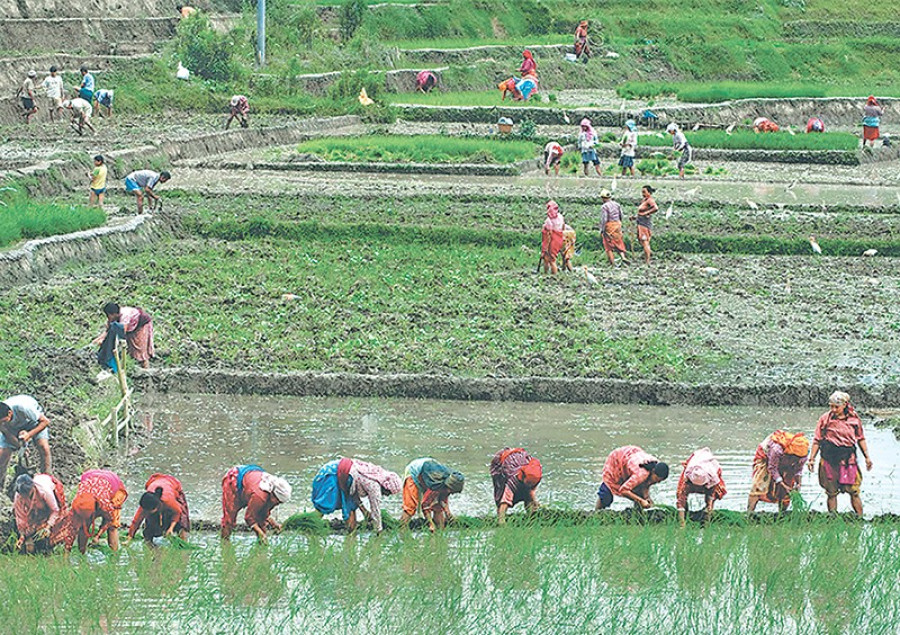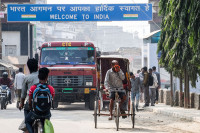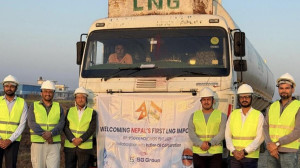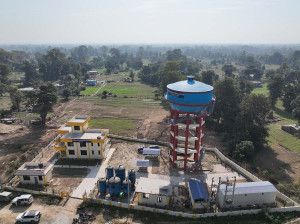Money
Floods leave 8pc of paddy fields unplanted
Farmers have been forced to leave 8 percent of the country’s paddy fields unplanted due to floods which hit the southern Tarai plains in mid-August.
Farmers have been forced to leave 8 percent of the country’s paddy fields unplanted due to floods which hit the southern Tarai plains in mid-August.
The country suffered record floods following torrential rain from August 11-14 that left 31 districts awash in water.
The Ministry of Agricultural Development said that paddy transplantation had been completed on 91.93 percent of the 1.55 million hectares of paddy fields as of Monday.
“Farmers in the Tarai still have the option of sowing paddy seeds. They have a week-long window before the beginning of September,” said Bhaba Prasad Tripathi, senior associate scientist of the International Rice Research Institute Nepal (IRRI-Nepal).
However, the floodwaters have to recede from the fields, so farmers will be able to plant paddy only on high ground or upland areas, he said.
Paddy can be either direct seeded or transplanted. In direct seeding, the seeds are sown directly in the fields. In transplanting, seedlings are raised in seedbeds and the paddy saplings are planted in the fields.
A number of seeds like Hardinath 1 and 3, Sukkha Dhan 3, Ciherang Sub 1 and others can tolerate submergence stress, Tripathi said. These seeds need to be kept in water for 36 to 48 hours for them to germinate. After that, they can be sowed directly.
“By sowing these seeds, we can reduce losses to some extent, but the question is availability of the seeds in the local market.”
Floodwaters have wiped out more than Rs8 billion worth of crops, according to government estimates. The paddy crop suffered the most with damage amounting to Rs3.18 billion. These figures, however, are estimates of losses during the plantation period.
Agro experts said that the impact of the floods can affect yield. Besides, farmers will not be able to plant paddy on at least 8 percent of the country’s paddy fields.
However, Tripathi said that it was too early to predict harvest losses.
Floods can be beneficial in many ways despite their immediate ill effects. They provide nutrients to the soil. “A flood makes the soil more fertile and increases agricultural production,” said Tripathi. There will be losses, but the extent cannot be predicted, he added.
The ministry’s statistics show that paddy transplantation has been completed on 99.92 percent of the fields in the mountain region, 97.67 percent in the hills and 89.41 percent in Tarai.
The Tarai, which is the major paddy producing region in the country, contains 71 percent of its rice fields. The hilly region contains 25 percent and the mountain region 4 percent. This year, the monsoon entered Nepal on June 12, two days after the normal onset date. However, it was weak and only started to pick up pace from June-end allowing farmers to start transplanting paddy.
According to the ministry, the transplantation rate is higher in the Far Western Region with 100 percent of the total 176,560 hectares planted to paddy.
Likewise, the transplantation rate in the Mid-Western and Western regions has been recorded at 99.34 percent of the 178,096 hectares and 99.18 percent of the 312,547 hectares respectively.
The Central and Eastern regions, however, have seen a low transplantation rate. According to the ministry, the transplantation rate in the Central and Eastern regions has been recorded at 82.53 percent of the 439,328 hectares and 89.94 percent of the 445,938 hectares.
In the plains, Dhanusha, Mahottari and Sarlahi districts have recorded a transplantation rate of only 55 percent as floods prevented farmers from transplanting paddy, the ministry said. Likewise, Siraha and Morang districts have also observed low transplantation rates of 79 percent and 80 percent respectively.




 20.12°C Kathmandu
20.12°C Kathmandu












